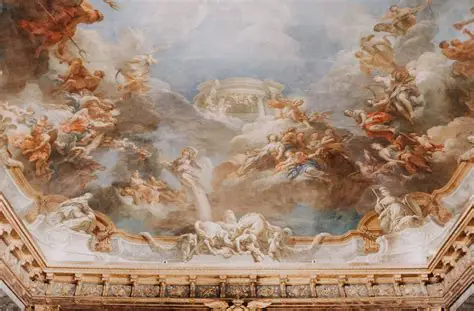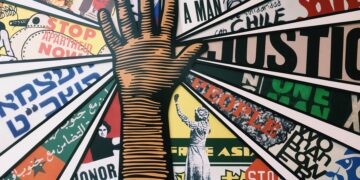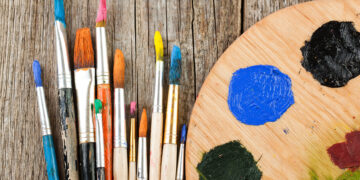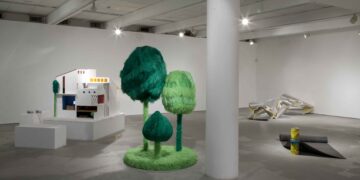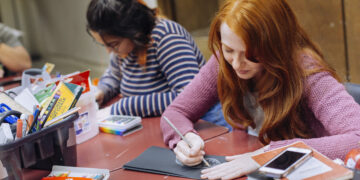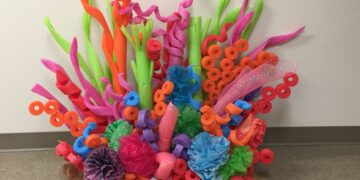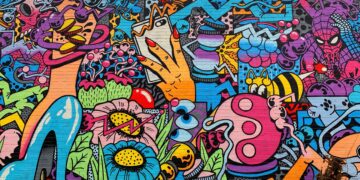Echoes of the Past: Unveiling Ancient Artistry
Exploring ancient art provides a unique lens through which to view the beliefs, rituals, and daily lives of past civilizations. From cave paintings to monumental sculptures, these early forms of expression offer invaluable insights into the development of human consciousness and visual communication. The repatriation of art and artifacts to their original communities reflects a deeper understanding of ethical considerations surrounding cultural heritage and a commitment to righting historical injustices.
For instance, a governor once proposed allocating funds to support a museum in repatriating indigenous remains and artifacts, highlighting a growing emphasis on historical justice and cultural heritage restoration. Events such as the return of artifacts to various communities underscore a commitment to addressing historical responsibilities, promoting cultural diversity, and preserving historical memory. These developments suggest that future art history research and exhibitions will likely prioritize diverse perspectives and historical context. By acknowledging the complex histories behind these objects, we can foster a more inclusive and nuanced understanding of art’s role in shaping human history.
Renaissance Innovations: From Marble to Masterpieces
The Renaissance marked a dramatic shift in artistic expression, moving from classical ideals embodied in marble sculptures to dynamic and innovative masterpieces. Renaissance art was deeply influenced by humanism, a philosophical movement that emphasized human potential and achievement. Artists began to focus on depicting the human form with greater accuracy and realism, studying anatomy and employing techniques like chiaroscuro to create lifelike representations, a shift from the more stylized depictions of the medieval period.
The Renaissance saw a surge in artistic innovation, with artists experimenting with new materials and techniques such as oil paint, which allowed for greater detail and richer colors. The rediscovery of linear perspective revolutionized the way artists depicted space, creating a sense of depth and realism largely absent in earlier art. Figures like Michelangelo, Leonardo da Vinci, and Raphael epitomized the Renaissance spirit, showcasing a mastery of technique, a deep understanding of human anatomy, and a profound appreciation for beauty. Exhibitions highlighting their sculptures and sketches demonstrate the era’s artistic breakthroughs.
The Renaissance left an indelible mark on art history, its emphasis on humanism, innovation, and realism paving the way for future artistic movements. Its influence can be seen in art and visual culture worldwide, and its themes continue to be reinterpreted in a global context. The Renaissance remains a touchstone for artistic excellence and a source of inspiration for artists today.
Baroque Brilliance: Drama and Grandeur in a Transformative Era
Baroque art, known for its drama and grandeur, flourished during a transformative period, becoming a powerful tool that engaged audiences through sensory experiences and dramatic expressions. Emerging from the religious and political tensions of the 16th to 18th centuries, including the Protestant Reformation, Baroque art sought to emotionally move viewers and reinforce religious narratives, a response to a need for more engaging artistic expression.
Baroque art is characterized by dramatic movement, strong contrasts of light and shadow, and detailed realism. These elements were intentionally used to create a theatrical and impressive experience for audiences. The Catholic Church became a major patron of Baroque artists, commissioning works that embodied these dramatic and vivid qualities, significantly shaping the artistic output of the period and promoting religious persuasion through art.
The Baroque style extended beyond painting and sculpture, influencing architecture, music, and even furniture design. Elaborate ornamentation and the theatrical use of space became hallmarks of the era across these diverse artistic mediums. During the Baroque period, art evolved into a potent instrument of communication and sensory engagement, spanning Europe and marking a time when art was strategically used to impress and influence audiences on a grand scale.
Capturing Light and Color: The Impressionist Revolution
Impressionism, a transformative movement in art history, sought to capture the ephemeral qualities of light and color. Defying academic conventions, Impressionist painters embraced innovation, forever changing the course of artistic expression and influencing generations of artists. Emerging in the late 19th century, Impressionism marked a radical departure from traditional academic art. Artists like Claude Monet aimed to capture fleeting moments of light and atmospheric conditions, employing vivid, unblended colors and expressive brushwork, prioritizing sensory experience over precise detail.
The movement, spanning from 1874 to 1886, was characterized by independent exhibitions that challenged the established Paris Salon and the prevailing realism. This defiance of convention was central to the Impressionist ethos, paving the way for new artistic freedoms. Technological advancements, such as the portable paint tube, played a crucial role, enabling artists to work outdoors (“en plein air”), directly observing and depicting the nuanced interplay of light and color in natural settings, further enhancing the immediacy of their work.
Impressionism fundamentally altered perceptions of artistic technique and subject matter. By prioritizing the immediate sensory experience, these artists influenced subsequent styles like Post-Impressionism and shaped modern understandings of art as a reflection of subjective perception and the passage of time.
Modernist Movements: Shattering Conventions with Bold Visions
Modernist movements redefined art by challenging traditional norms and embracing innovation, reshaping artistic expression and continuing to influence contemporary art perspectives. Modernism’s scope is widening beyond its Euro-American origins, with current academic discussions acknowledging it as a worldwide phenomenon, incorporating diverse cultural contexts and artistic expressions from various regions.
The conventional separation between modernism and realism is increasingly questioned, with scholars highlighting how artists across the globe during the twentieth century ingeniously merged critical perspectives with novel artistic approaches, showcasing a blend of styles. Art history is undergoing a revision to include previously marginalized groups, such as women artists, also involving reevaluating established narratives to offer a more inclusive and comprehensive understanding of artistic contributions.
Institutions are actively supporting research that examines both the historical achievements and contemporary reinterpretations of modernist movements, helping broaden our understanding of artistic visions and their ongoing impact. The importance of cross-cultural communication in shaping modernism’s legacy is increasingly emphasized, enriching our understanding of art and highlighting the interconnectedness of global artistic movements.
Q&A
Question 1: How did the Renaissance period revolutionize artistic expression, and what were some key innovations?
Answer: The Renaissance marked a significant shift from medieval stylized art to a focus on humanism, realism, and innovation. Key innovations included the use of oil paints for richer colors and detail, the rediscovery of linear perspective for creating depth, and a meticulous study of human anatomy for more accurate depictions of the human form. Masters like Michelangelo, Leonardo da Vinci, and Raphael epitomized these advancements.
Question 2: What role did the Catholic Church play in shaping Baroque art?
Answer: The Catholic Church was a major patron of Baroque art, commissioning numerous works that reflected the era’s dramatic style and served to reinforce religious narratives. The Church’s patronage heavily influenced the artistic output of the period, promoting emotionally engaging and visually impressive art to inspire religious devotion.
Question 3: How did Impressionism challenge traditional artistic conventions, and what was its lasting legacy?
Answer: Impressionism radically departed from traditional academic art by prioritizing the fleeting effects of light and color, employing vivid, unblended colors, and expressive brushstrokes. It challenged the established Paris Salon and embraced “en plein air” painting, enabled by advancements in portable paint technology. Its lasting legacy lies in its influence on subsequent art movements and its fundamental shift in artistic technique and subject matter, emphasizing subjective perception and the passage of time.
Question 4: What are some of the current trends and discussions shaping modern art history scholarship?
Answer: Current scholarship is expanding the scope of modernism beyond its Euro-American origins, acknowledging its global nature and incorporating diverse cultural contexts. There’s a growing reassessment of established narratives, including the inclusion of previously marginalized artists and a blurring of the lines between modernism and realism. Furthermore, institutions are increasingly supporting research that examines both historical achievements and contemporary reinterpretations of modernist movements, fostering cross-cultural dialogue.
